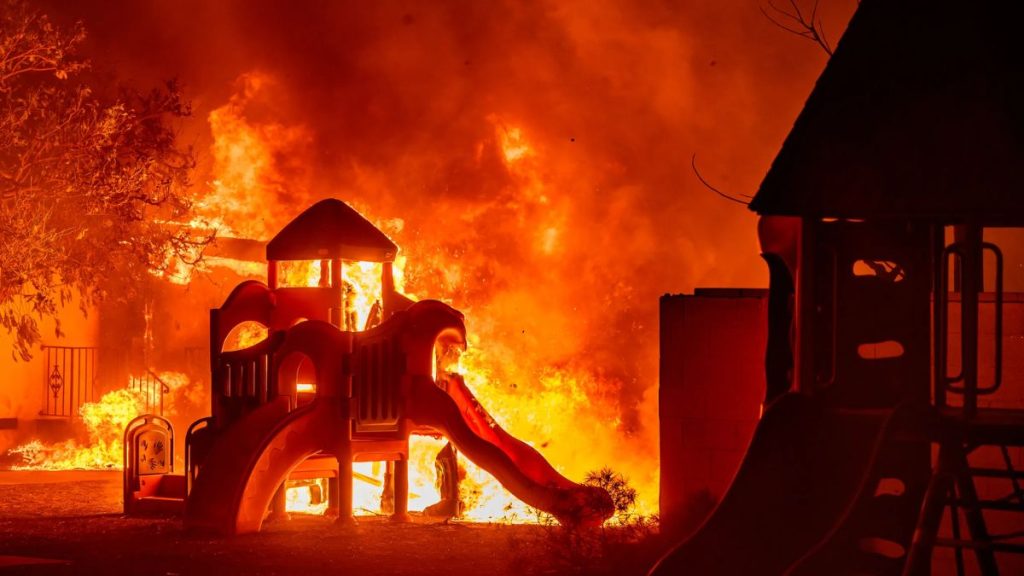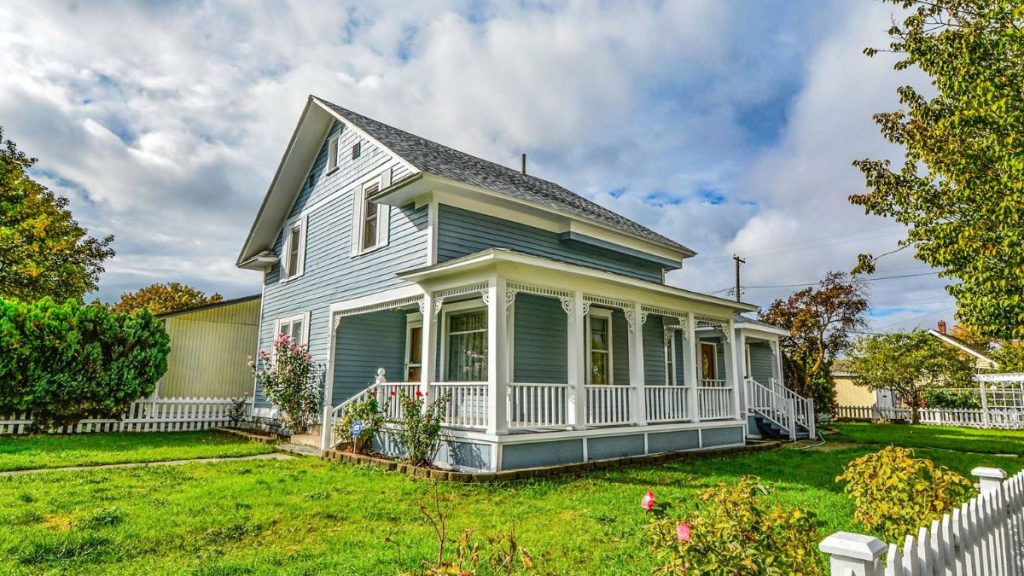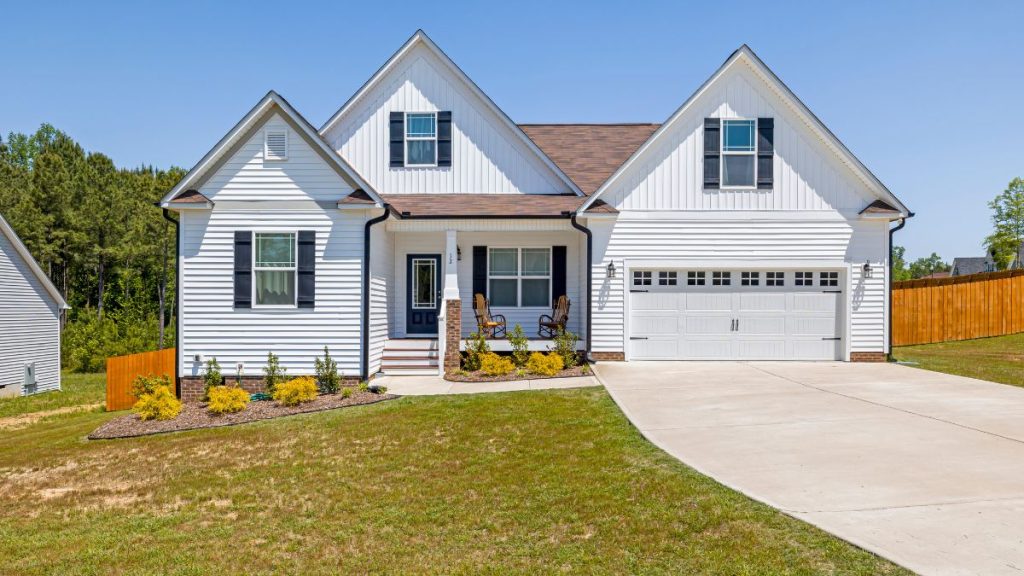James Woods in Tears After Home Burns Down: Is Fireproofing Worth It?
James Woods, a well-known actor, recently faced an unimaginable loss when a wildfire tore through his multi-million-dollar home in Los Angeles. As devastating as it was for Woods, the incident serves as a wake-up call for everyone—celebrity or not—that even the most luxurious homes are vulnerable to nature’s unpredictable forces.
Wildfires, floods, and other natural disasters are not reserved for low-income areas or rural homes; high-profile estates in disaster-prone regions are just as at risk.
This tragedy underscores a critical point: security and disaster preparedness are vital, not only for protecting lives but for safeguarding valuable properties. While it is tragic to think that even celebrities are not immune to these catastrophes, it’s an opportunity to explore what lessons can be learned and how home security, especially fire safety, can be improved for everyone.
The Reality of Celebrity Home Vulnerability
The fire that ravaged James Woods’ LA mansion is a stark reminder that no one is immune to the threat of wildfires, regardless of their wealth. Celebrities often invest in lavish homes located in some of the most sought-after (and, unfortunately, fire-prone) areas, such as California.
These homes are usually built with exquisite materials, but those materials aren’t always fire-resistant, making them susceptible to the same disasters that affect ordinary families in these regions.
Actor James Woods breaks down in tears after losing multi-million dollar LA home to wildfires.
— AF Post (@AFpost) January 9, 2025
Follow: @AFpost pic.twitter.com/H5954yrhCd
For instance, Woods’ home was in the affluent Hollywood Hills, a region notorious for wildfires during dry seasons. While these properties are equipped with top-notch security systems, the danger posed by wildfires requires additional measures that not all homeowners prioritize. The question then arises: If even celebrities can’t avoid this threat, what does that mean for the average homeowner? Are they just as vulnerable?
Additionally, many of these luxurious homes are designed with expansive gardens, large windows, and sprawling layouts—features that, while aesthetically pleasing, are also more susceptible to catching fire. The sheer size and open nature of such estates often make it difficult to implement effective firefighting strategies before the damage becomes irreversible.
With the added challenge of celebrity homes being high-profile targets, these properties can become fire hazards that need special attention.
While high-end security systems protect against theft and break-ins, the issue of natural disasters—particularly fires—is often overlooked. This raises the need for all homeowners, whether they reside in multi-million-dollar mansions or more modest homes, to reassess their home safety systems, especially in fire-prone areas.
Wildfire Threat and Fire Security

Wildfires are a growing threat, particularly in the western United States. The extreme heat of summer, combined with drought conditions and high winds, makes wildfires a frequent and deadly occurrence.
The increasing intensity of these fires can be linked to climate change, with experts predicting that the number of fires will continue to rise. According to the National Fire Protection Association (NFPA), nearly 60 million Americans live in areas at high risk of wildfires, and as we’ve seen with James Woods, no one is immune from the threat—especially in high-risk areas like California.
While the focus has typically been on fire prevention from an environmental standpoint, protecting homes from wildfires requires a multi-layered approach. This involves both structural changes to the home itself and the use of technology and fire safety systems designed specifically for wildfire-prone areas. Let’s look at what home builders, owners, and even celebrities like James Woods can do to better protect their homes.
Fire-Resistant Construction
One of the first lines of defense against wildfires is the use of fire-resistant materials. Building or upgrading a home to withstand fires is essential in high-risk areas. Homes can be constructed with:
- Fire-resistant roofing: Materials such as metal or tile roofs can help prevent embers from igniting a house.
- Fire-resistant walls: Concrete, brick, or fire-treated wood are recommended for exterior walls to resist heat and flames.
- Ember-resistant vents: Wildfires spread quickly via wind-borne embers, and protecting vents is crucial. Adding ember-resistant screens or closing vents with metal mesh can help stop embers from entering the house.
Fire Protection Systems
In addition to using fire-resistant materials, installing automated fire detection and suppression systems can be invaluable. These include:
- Fire alarms and detectors: Smoke detectors that are linked to the local fire department can provide early warning of a fire.
- Sprinkler systems: Automated sprinkler systems, designed for wildfires, can spray water or foam on the home to help suppress flames before they spread.
Evacuation Plans
Having a well-thought-out evacuation plan is not just for families in hurricane-prone areas; it’s equally important in wildfire zones. Fires can spread quickly, leaving little time for evacuation. Here are some key steps for any homeowner to take:
- Evacuation routes: Know all possible routes out of the area, especially in regions with limited access.
- Prepare an emergency kit: Always have a kit ready with essentials like important documents, medications, and other necessities.
- Stay informed: Install weather and emergency alert apps on your phone to receive real-time updates during wildfire season.
By implementing these fire protection strategies, homeowners can greatly reduce the risk of losing their property to wildfires. While James Woods’ story is a tragic reminder, it also serves as a powerful motivator for all of us to rethink our home security strategies—especially in fire-prone areas.
Whether you own a luxury mansion or a suburban home, it’s essential to protect your investment and your loved ones with the proper precautions and preparations.
You can also read about a couple who robbed at gunpoint in Glenview here: Glenview Couple Robbed at Gunpoint: What This Shocking Crime Teaches About Home Security
Insurance, Preparedness, and Disaster Planning

When it comes to protecting homes against natural disasters like wildfires, insurance is a vital component of preparedness, especially for high-value properties like James Woods’ home. Homeowners need to recognize that standard homeowner’s insurance may not provide full coverage in the event of a natural disaster.
For high-net-worth individuals with multi-million-dollar estates, specialized insurance policies are necessary to ensure that the home, its contents, and even the costs of temporary relocation are fully covered.
Insurance for High-Value Homes
Standard homeowner’s insurance policies typically cover damage due to fire, but there are often exclusions when it comes to specific types of fires, such as wildfires, which can be more devastating and uncontrollable. Homeowners with properties valued in the millions should consider high-value home insurance policies tailored to their unique needs. These policies usually offer:
- Full replacement cost coverage: Unlike standard policies that may only pay out based on the market value of the home, high-value home insurance covers the full cost of rebuilding the home to its original condition.
- Extended coverage: This can include protection against damages caused by floods, earthquakes, and wildfires, which often are excluded from regular home insurance.
- Temporary living expenses: In the event of displacement, this coverage helps homeowners with the cost of lodging, food, and other living expenses while their home is being rebuilt or repaired.
For celebrities and high-net-worth individuals, maintaining a customized insurance policy that reflects the unique features of the property—like custom-built furnishings, art collections, and other valuables—ensures that they can fully recover after a disaster strikes. The coverage should also extend to important elements such as evacuation costs and emergency services.
Disaster Preparedness and Planning
Having adequate insurance is only one part of the equation. Disaster planning is just as critical, particularly in high-risk areas where wildfires are common. Every homeowner, whether in an upscale mansion or a modest home, should have a disaster preparedness plan in place. Here are key components that should be included:
- Emergency Kit: Prepare a well-stocked emergency kit that includes important documents (e.g., insurance policies, identification), medications, flashlights, batteries, and non-perishable food. Store it in an easily accessible location.
- Evacuation Routes and Assembly Points: It’s essential to plan multiple evacuation routes in case roads are blocked or unsafe. Designate an assembly point for family members, and make sure all household members know how to reach it.
- Fire-Resistant Landscaping: Create defensible space around your home by clearing vegetation and using fire-resistant plants. This can significantly reduce the chances of a wildfire spreading to the property.
- Regular Fire Drills: In wildfire-prone areas, homeowners should conduct periodic fire drills to ensure that everyone knows what to do and where to go in case of an emergency.
- Real-time Alerts: Installing fire detection systems connected to local emergency services can help notify you immediately if a wildfire is approaching. Also, download apps for weather updates and emergency alerts to stay informed.
What Homeowners Can Learn from James Woods’ Tragedy

James Woods’ devastating loss in the recent wildfire serves as a wake-up call, not only for celebrities but for all homeowners living in high-risk areas. While the destruction of his property is heartbreaking, it provides an opportunity to reflect on what can be done differently to minimize the impact of such disasters. Homeowners across the country, regardless of wealth, can learn valuable lessons from Woods’ experience.
Improvement in Security Systems
One of the primary lessons is the importance of fireproofing and ensuring that homes are built or retrofitted with fire-resistant materials. Homeowners can adopt a proactive approach by investing in:
- Fire-resistant roofing: As mentioned, a fire-resistant roof is a vital defense against wildfires, preventing embers from catching fire.
- Non-combustible fencing: Use of fire-resistant fencing materials to prevent fire from easily spreading.
- Defensible space: Creating a defensible space between the home and surrounding vegetation, using fire-resistant landscaping and trimming overhanging branches.
Additionally, integrating fire suppression systems, such as sprinklers that specifically address wildfire threats, can be life-saving. Even simple improvements like ember-resistant vents can significantly reduce the chances of a home being destroyed by wildfire.
Prevention Over Reaction
Woods’ experience highlights how crucial it is to prevent the damage before it starts. Waiting until a disaster strikes can be too late to implement meaningful security measures. Homeowners should act preemptively by:
- Regularly updating fire safety protocols and evacuation plans
- Assessing and upgrading their insurance coverage to reflect the risks they face
- Installing comprehensive home security and fire detection systems, including smoke detectors, sprinklers, and surveillance cameras.
Value of Proactive Measures
Proactive home security measures not only protect the property but also safeguard the people living within. Investing in fire-resistant materials and technology today can ensure that in the event of a disaster, both your home and family are better protected.
The tragic loss of James Woods’ home serves as a reminder that natural disasters, particularly wildfires, are unpredictable and destructive. But with the right preparations, homeowners can reduce their vulnerability and protect their most valuable assets.
Conclusion
James Woods’ wildfire tragedy may have been a devastating loss, but it also serves as a valuable lesson for everyone, regardless of their home’s value. Celebrities and average homeowners alike must prioritize wildfire protection, including fire-resistant construction, comprehensive disaster preparedness plans, and effective insurance coverage.
By implementing these strategies, homeowners can better safeguard their properties and loved ones from the unpredictable and devastating forces of nature.
Take action today—evaluate your home’s security measures, enhance fireproofing, and ensure you have the right coverage and preparedness in place. Stay safe, and make your home a fortress against the wildfires of tomorrow.
Don’t wait for disaster to strike—take proactive steps today to secure your home and protect your loved ones. Whether you’re a celebrity homeowner or someone with a modest property, wildfire preparedness is essential for everyone. Visit our website for expert advice on improving home security, fire prevention, and insurance planning. Make your home safer with the right tools and strategies!
Disclaimer: The information provided in this article is for general informational purposes only. The views expressed do not constitute professional advice. Always consult with a qualified expert or insurance provider to assess your specific home security needs and wildfire preparedness. Our site does not guarantee the accuracy of external sources and encourages readers to take appropriate measures based on their unique situation and location.


